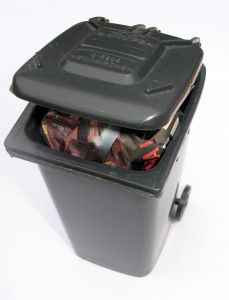 Recently, a new term has been coined in the green socioverse — “precycling.” While defined different ways, the term basically refers to a change in customer thinking toward the reduction in waste and a predisposition toward recyclable packaging and packaging or manufacturing components that make products easier to recycle.
Recently, a new term has been coined in the green socioverse — “precycling.” While defined different ways, the term basically refers to a change in customer thinking toward the reduction in waste and a predisposition toward recyclable packaging and packaging or manufacturing components that make products easier to recycle.
There are some great trends coming out of precycling: purchasing products in bulk to reduce packaging; creative re-use of products (re-filling of plastic water bottles with filtered water, re-using plastic coffee containers to store unused paint); use of canvas shopping bags; growth of “do not mail” lists that reduce unwanted catalogs and junk mail; and so on.
These trends provide real, measurable environmental benefits. But it’s easy to oversell precycling, too. In the hype, the danger is that we can end up working against true sustainability.
For example, I’ve recently been bristling over the over-selling of e-media, as if reading the newspaper online is “greener” than reading it on recycled and recyclable newsprint. In reality, the carbon footprint of the e-media industry may be far greater, and the components of computer-related hardware less recyclable, than that of traditional print. Thus, an over-emphasis on e-media to the exclusion of print may actually be harmful—rather than beneficial—to the environment. It’s just not popular to say so.
Likewise, doing away with extraneous packaging saves money and cuts down on waste, and using recycled paperboard, plastics, or biodegradable materials for packaging and shipping cartons makes sense, too. But just because something is recyclable doesn’t mean it’s better for the environment. Here is where we have to be careful not to buy into the hype.
Sometime back, I wrote about SunChips’ promotion of the fact that its packaging is “recyclable.” Upon further investigation, what SunChips meant was that one of the three layers of its packaging was recyclable. That’s terrific, and SunChips is to be applauded for that step. In the meantime, however, there is no practical effect on the environment. Why? Because once that recyclable layer is laminated to the other two, non-recyclable layers, the entire package becomes nonrecyclable. This doesn’t mean developing recyclable layers is not an important step, because SunChips plans to work toward a fully recyclable package, but that is some time away. In the meantime, the package is not, in fact, recyclable and ends up in the landfill like every other package.
The same issue arises with things like biodegradable inks? Yes, biodegradable ink is important, but it doesn’t actually do any good for the environment now if the end product is not recyclable (for example, if it will be coated or laminated).
When thinking about precycling, it’s important to keep the realities in mind.
- Think about the full carbon footprint of the product.
- Consider the cradle to grave impact, not just one narrow sliver its product lifecycle.
- Look at the sustainability of the manufacturing process, too, not just the product itself.
- Focus on practical, measurable initiatives like reduction and re-use, not just on theoretical benefits like recyclability (which may or may not actually occur).
Sometimes we support precycle initiatives, not because the current iteration benefits the environment, but because we’re supporting a company’s long-term goal (such as the case with SunChips). We just need to understand that is what we are doing and not be lulled into a false sense of “greenness,” as if this interim step is enough.
We may also support precycle initiatives because the company is using a greener manufacturing process, even if the end result doesn’t have a practical green effect. For example, a growing number of companies are using 100% wind power or other alternative energy sources to power their factories.
So while we’re supporting precycle initiatives, let’s look past the initial marketing hype and understand what the true environmental impact of these initiatives is. Sometimes it’s less — and sometimes it’s greater — than it may appear on the surface.
Like this post? View all my “Greening Print Marketing” posts.


